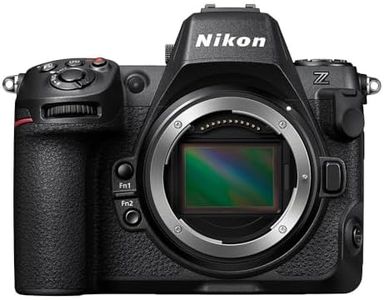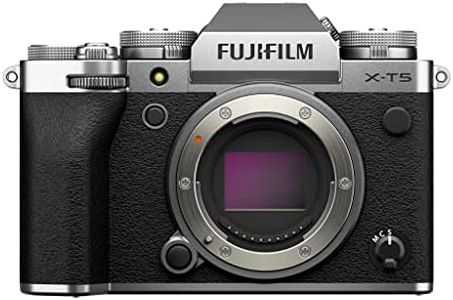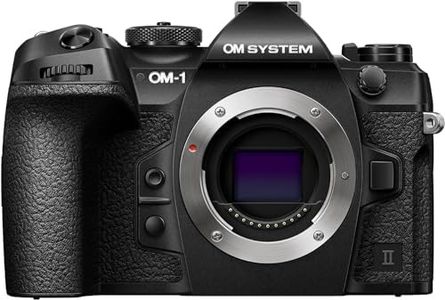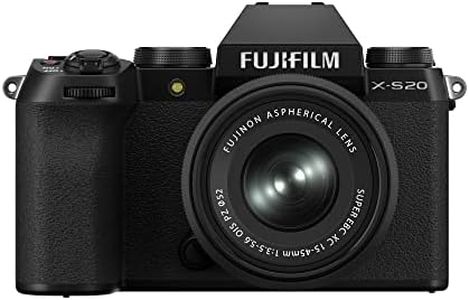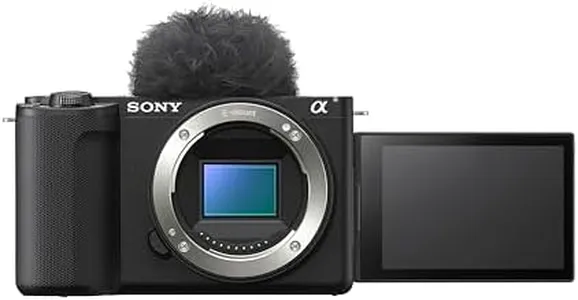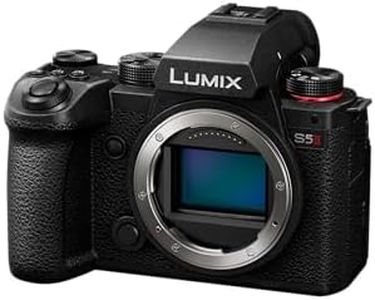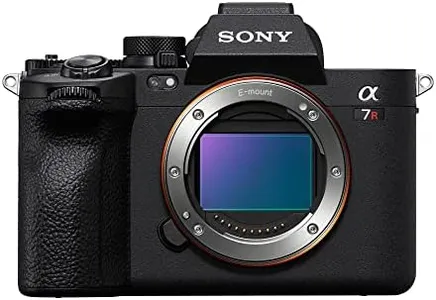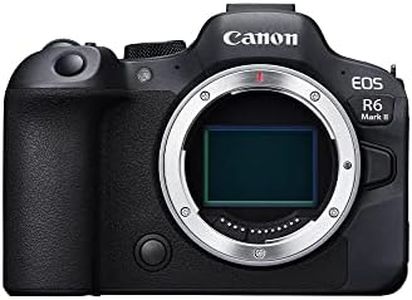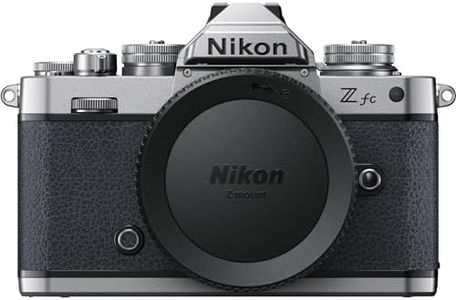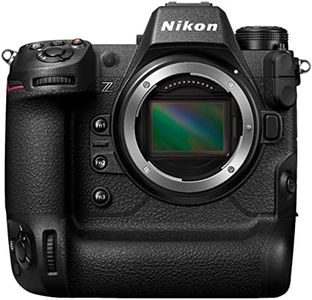We Use CookiesWe use cookies to enhance the security, performance,
functionality and for analytical and promotional activities. By continuing to browse this site you
are agreeing to our privacy policy
10 Best Compact Mirrorless Cameras
From leading brands and best sellers available on the web.#1
Winner
Buying Guide for the Best Compact Mirrorless Cameras
When shopping for a compact mirrorless camera, it’s important to find a balance between portability, image quality, and features that suit your habits. Mirrorless cameras are known for packing high-quality imaging into a small body, so think about where and how you’ll be using your camera - whether it’s travel, daily casual shooting, or more creative photography. Let your lifestyle and priorities guide which features matter most for you.Sensor SizeSensor size refers to the physical dimensions of the image sensor inside the camera, which greatly impacts image quality, especially in low light, and controls how much background blur (bokeh) you can achieve. The main sensor sizes are Full Frame, APS-C, and Micro Four Thirds. Full Frame sensors are largest, providing best low-light performance and depth of field control, but may result in slightly larger cameras. APS-C strikes a good balance, with notable image quality and a compact size. Micro Four Thirds sensors are smaller, making cameras very portable, but with some trade-offs in image quality, particularly in low-light scenarios. Choose a sensor size based on your emphasis on image quality versus portability: larger sensors for ultimate image quality, smaller for maximizing compactness.
Autofocus SystemThe autofocus system determines how quickly and accurately the camera can focus on your subject, both for stills and video. More advanced systems often have more focus points or phase detection technology, which helps especially for moving subjects or low-light situations. Entry-level cameras may have fewer points and be slower, which is usually fine for landscapes or calm scenes. If you often shoot fast-moving subjects like kids, pets, or sports, a camera with faster and more sophisticated autofocus is beneficial. If you mostly capture still scenes, a simpler system will suffice.
Continuous Shooting SpeedContinuous shooting speed, measured in frames per second (fps), tells you how many images the camera can shoot in rapid succession. High fps is important if you want to capture action shots or fleeting expressions, such as in sports or wildlife photography. Slower speeds are fine for travel, street, or portrait photography where moments aren’t as unpredictable. Think about the subjects you photograph most to decide if a higher frame rate is necessary.
Image StabilizationImage stabilization (IS) helps minimize blurry photos caused by shaky hands, especially in low light or when using zoom lenses. Some cameras have it built into the camera body (in-body), while others rely on stabilization in the lens. Stronger stabilization makes it easier to get sharp shots without a tripod, ideal for handheld shooting and video. If you shoot a lot in dim conditions, or video handheld, prioritize models with effective stabilization.
Electronic Viewfinder (EVF)An electronic viewfinder allows you to compose your shot by holding the camera up to your eye, rather than using just the rear screen. EVFs can be helpful in bright light when screens are hard to see and provide useful shooting information in real-time. Not all compact mirrorless cameras have an EVF: some only use a rear display to keep size minimal. If you like composing with the camera to your eye, look for a model with an EVF. If you are comfortable with just a screen, this may not be a priority.
Video CapabilitiesVideo features include resolution (like 4K or Full HD), frame rate options, and microphone inputs. Higher resolution and more advanced video settings are important if you plan to record a lot of video or want cinematic quality. For general family videos or occasional clips, basic video functions are usually enough. Consider how often you’ll use video and how important quality is to your projects.
Lens CompatibilityLens compatibility refers to the range of lenses available for the camera system. Some systems offer a broader selection, letting you expand into wide angle, telephoto, or macro photography easily, while others have a more limited range suited for casual users. Think about your future needs: if you plan to try different photography styles, ensure the camera supports a variety of lenses. For all-in-one convenience, look for systems with high-quality kit lenses.
